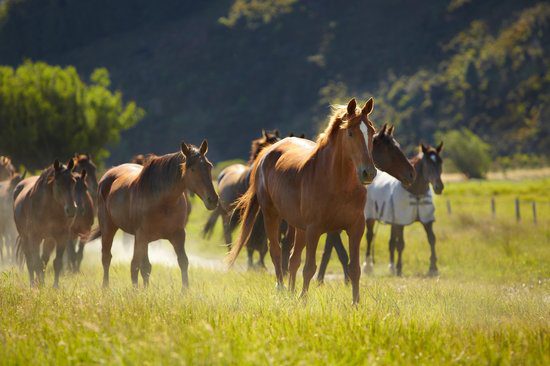The most common barrier that fails to function properly is the first barrier, the vulva. If the vulval seal is not in place, the mare can aspirate air through the vulva resulting in a “pneumovagina” which is sometimes called wind sucking. This air, along with environmental contaminants such as faeces can result in irritation and inflammation of the vagina (vaginitis) and cervix (cervicitis) which can then spread further into the uterus. Irritation and inflammation of the uterus may result in endometritis or a placentitis if the mare is pregnant. If bacteria or fungal organisms are aspirated along with the air, a uterine infection can develop resulting in poor reproductive performance of the mare or abortion in the case of the pregnant mare.
Early identification of poor vulvar conformation is important to avoid this problem. Aged mares are often overrepresented in the group of mares identified with this problem. Repeated foaling, injury to perineal tissue and thin body condition can contribute to development. Basically, things just aren’t as tight as they used to be! Just because she hasn’t had an issue in the past, doesn’t mean that she won’t need the problem addressed in the future. Younger mares in light body condition may also develop a pneomovagina. This is sometimes identified when in race training as a “wind sucker” which can lead to poor performance.
Poor vulvar conformation can usually be addressed with a Caslick’s procedure. The edges of the vulval lips are sutured closed to prevent aspiration of air and faeces. The length of the Caslick’s depends on the conformation of the mare. The bottom 1/3rd of the vulva remains open to allow normal urination. A Caslick’s is placed under local anaesthesia and sutures can be removed 14 days after placement and a permanent seal remains. Contamination of this area is common and breakdown of the Caslick’s can occur. Your veterinarian will check that the Caslick’s does not have any holes before suture removal.
If your mare has a Caslick’s in place there are a few things you should know:
1. Once a Caslick’s has been placed, the mare will usually require one for the remainder of her life. The normal architecture of the vulva is changed with the placement of the Caslick’s. Remember this if you acquire a racing filly that has a Caslick’s in place.
2. A Caslick’s needs to be opened for natural breeding. In some cases, a stallion may be able to breed a mare under a Caslick’s. In most cases a mare can be artificially inseminated without opening the Caslick’s either by breeding the mare under the Caslick’s or breeding her through a speculum.
3. A Caslick’s needs to be opened for foaling. Usually your veterinarian will have done a superb job placing the Caslick’s and this will form the strongest part of the vulva. When a mare foals, the foal will come through the path of least resistance. This is NOT through the Caslick’s. As such, it is VERY IMPORTANT that the Caslick’s is opened before the mare foals to prevent foaling accidents.
4. Replace the Caslick’s after foaling. If your mare had a Caslick’s in place but you are not going to breed her this season she will still need her Caslick’s repaired. This will prevent contamination of the uterus whilst she has time off.
The placement of a Caslick’s helps to restore the normal anatomy of the mare and assists in the prevention of endometritis and placentitis. It is a simple surgical procedure that may save a lot of hassle with uterine treatments and the potential loss of a valuable pregnancy. Rather than viewing this as a fault, think of it as being proactive in the protection of the reproductive proficiency of the mare.
Written by Dr Jen Clulow

